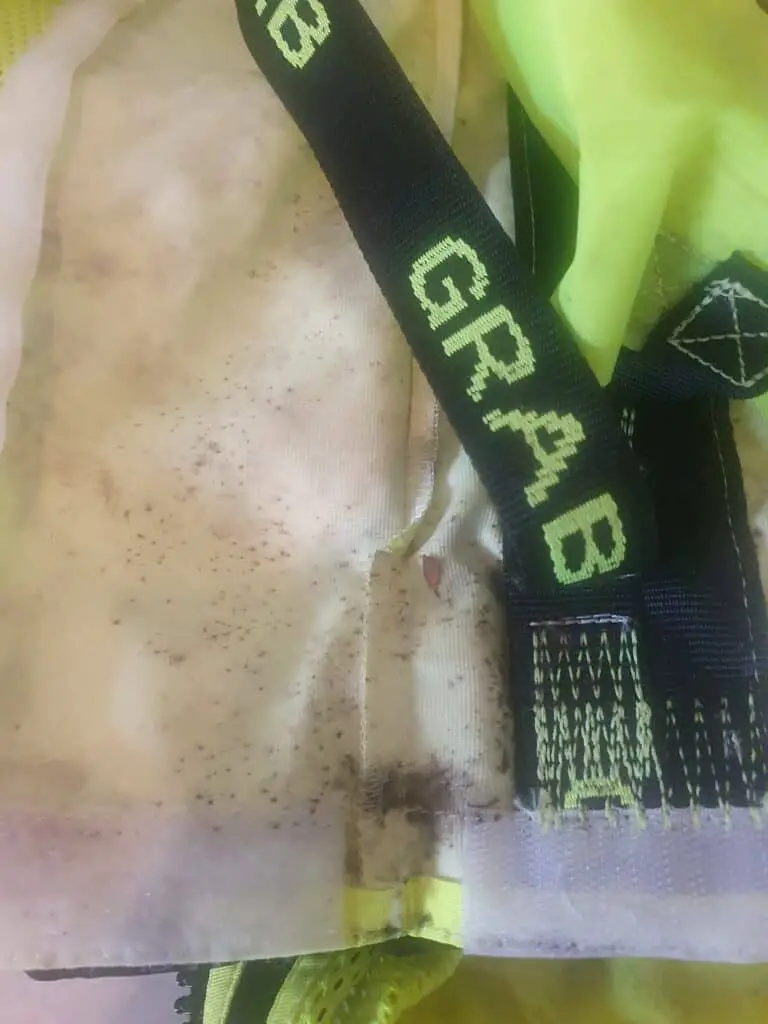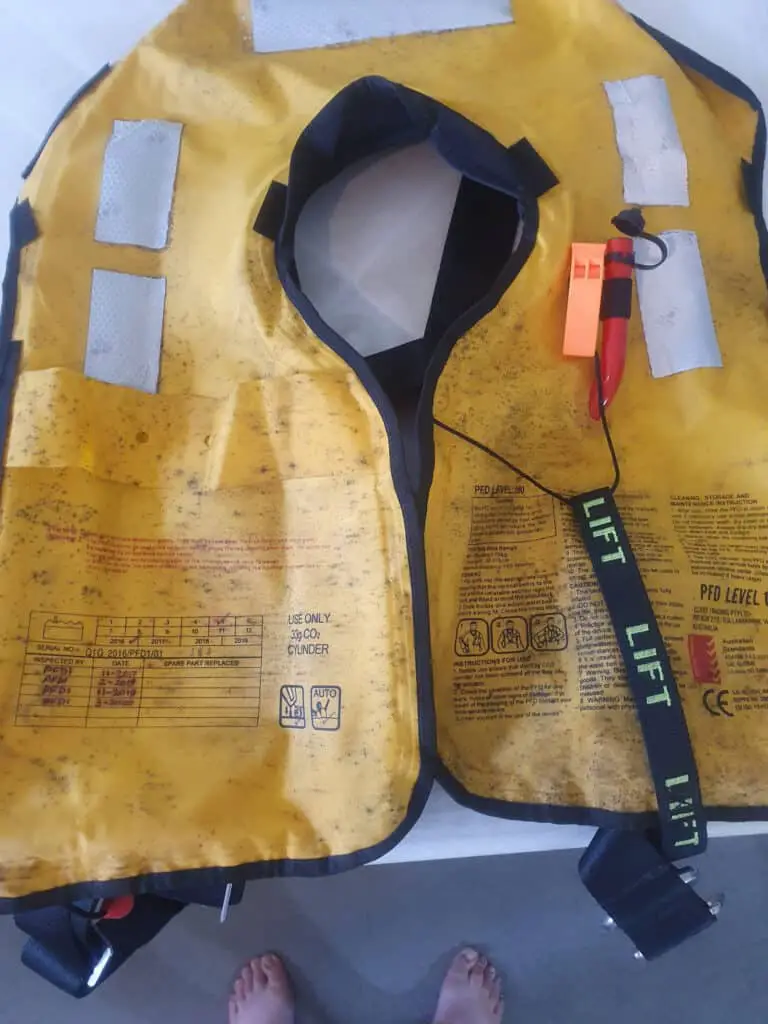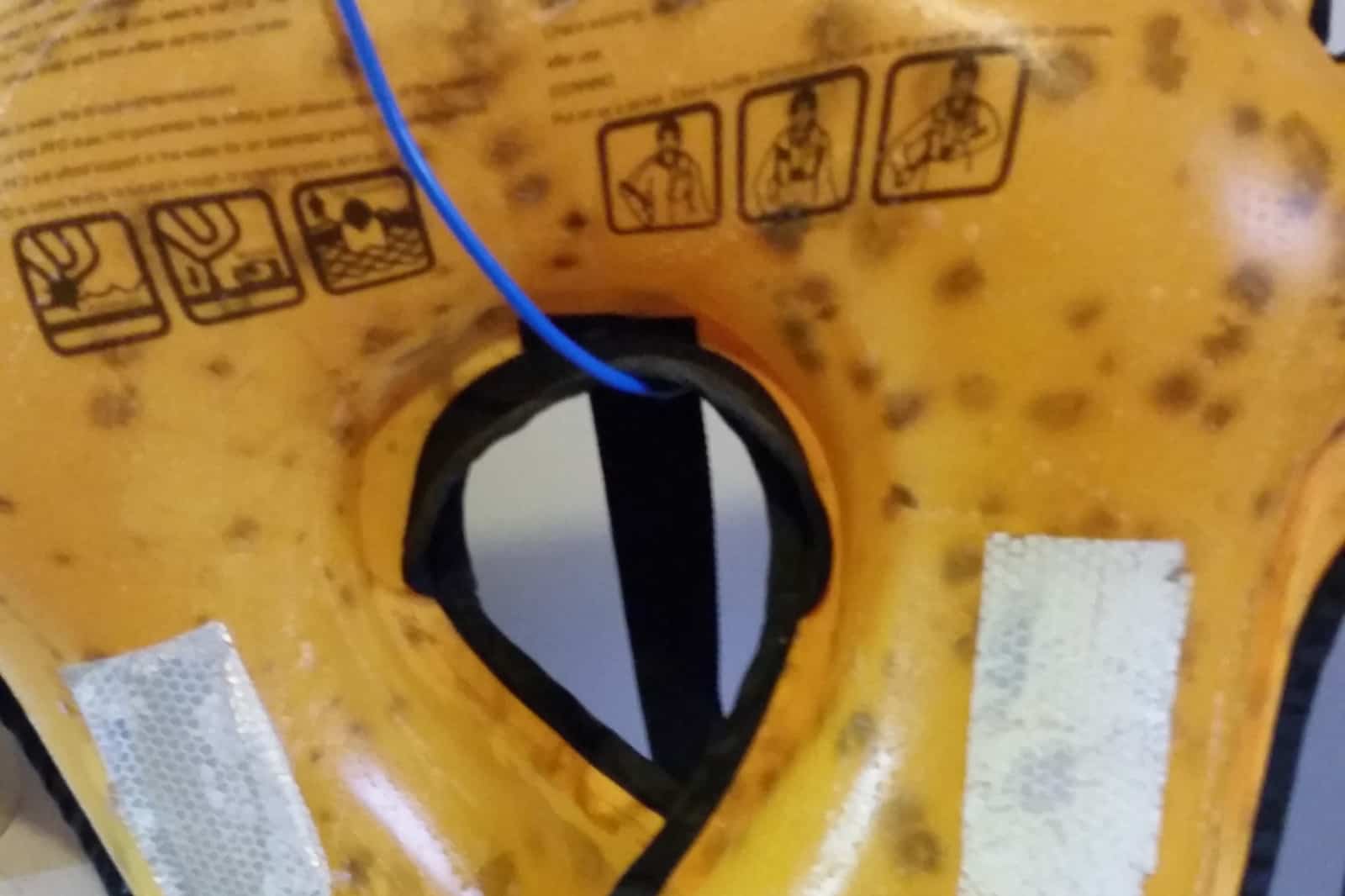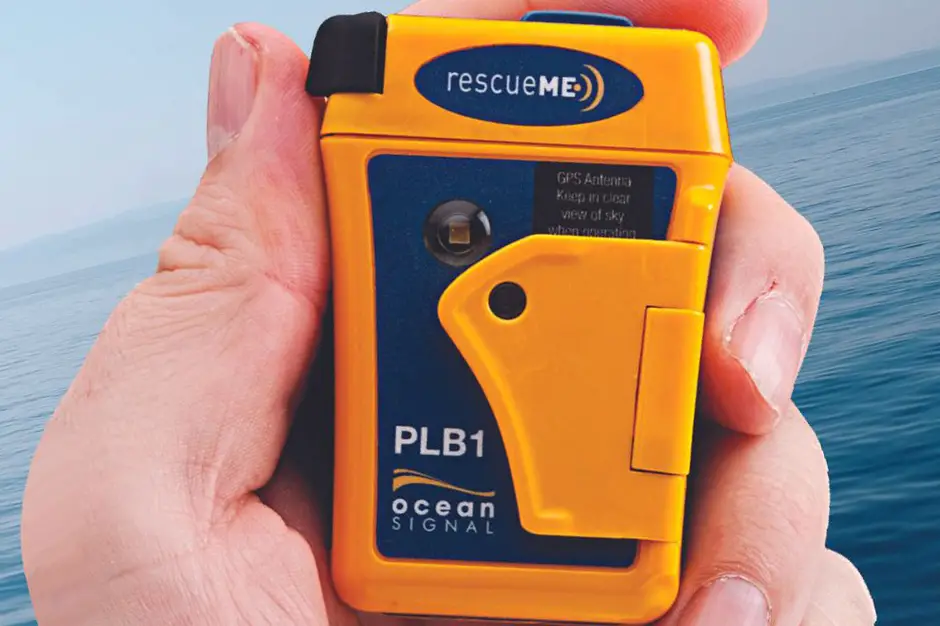A life jacket is an essential piece of safety equipment for anyone participating in water-based activities. It plays a crucial role in keeping individuals afloat and preventing drowning. However, to ensure the life jacket functions optimally, it is necessary to maintain it properly. Mold on life jackets can pose serious risks to both the equipment and the user.
If you’re wondering how to clean life jackets with mold, you don’t have to anymore. Life jackets with mold should be disposed of. Do not use a moldy life jacket.
In this blog post, we will discuss the importance of safety equipment maintenance, the risks associated with mold on life jackets, and the disposal of moldy life jackets. We will also provide helpful tips and advice to ensure your life jacket remains in top condition.
Risks of attempting to clean moldy life jackets
There are a few things to consider:
A. Damage to life jacket materials
Attempting to clean a moldy life jacket can cause further damage to its materials. Mold can weaken the fibers of the life jacket’s material, affecting the integrity of the air bladder. This damage can compromise the life jacket’s buoyancy and potentially put the user at risk in the water.
It is essential to understand that a life jacket is composed of different materials, including buoyant foam, synthetic fibers, and plastic components. The combination of these materials allows the life jacket to provide the necessary support in water. When mold affects the life jacket’s materials, it can create weaknesses in the structure, making it less effective in keeping the user afloat.
B. Health risks associated with mold exposure
Mold exposure can pose serious health risks, particularly for those with allergies, asthma, or compromised immune systems. Exposure to mold can lead to respiratory issues, skin irritation, and even more severe health complications. Attempting to clean a moldy life jacket can increase the likelihood of mold exposure, putting the individual at risk.
C. Ineffectiveness of cleaning mold
Mold can get into inaccessible areas of a life jacket, making it difficult to remove completely. Even if the visible mold is cleaned, there may still be mold hidden within the material, compromising the life jacket’s safety and effectiveness.
Considering the complexity of a life jacket’s design, it is nearly impossible to guarantee that all mold has been removed during cleaning. This is why it is generally not recommended to attempt cleaning a moldy life jacket, as it may still pose risks after the cleaning process.
What to do with a moldy life jacket
A. Replacement of life jacket
The best course of action when dealing with a moldy life jacket is to replace it. This will ensure that you have a reliable and safe piece of equipment that can provide the necessary buoyancy in case of an emergency.
It’s essential to consider the age and overall condition of your life jacket when deciding whether to replace it. If it is more than a few years old or has visible signs of wear and tear, it may be time to invest in a new life jacket to guarantee your safety on the water.
B. Proper storage and maintenance to prevent mold growth
Preventing mold growth in the first place is essential. Proper storage and maintenance can significantly reduce the likelihood of mold developing on a life jacket. Here are some helpful tips for storing and maintaining your life jacket:
- Store the life jacket in a cool, dry place, away from direct sunlight. Sunlight can cause the materials to break down over time, making them more susceptible to mold growth.
- Make sure the life jacket is completely dry before storage. Moisture is a leading cause of mold growth, so it is crucial to ensure that your life jacket is free from moisture before putting it away.
- Regularly inspect the life jacket for any signs of mold or damage, and address any issues promptly. Early detection of mold can prevent further damage and help maintain the life jacket’s effectiveness.
- Air out your life jacket after each use. Allowing it to dry in a well-ventilated area can help prevent mold growth.
- Avoid storing your life jacket in airtight containers or plastic bags, as this can trap moisture and create an environment conducive to mold growth.
C. Professional inspection services
If you suspect that your life jacket has mold but are unsure of the extent of the issue, consider utilizing a professional inspection service. They will have the necessary knowledge and tools to assess the condition of your life jacket and determine if it can be cleaned safely or should be replaced.
Professional services can also provide valuable advice on proper maintenance and storage to help prevent mold growth in the future. They can guide you in choosing the best storage solutions and inform you of any specific care instructions for your life jacket.
Common places to find mold on a life jacket
Mold can grow in various places on a life jacket, but there are some common spots to pay particular attention to when inspecting your life jacket:
- Seams and stitching: These areas can trap moisture and provide an ideal environment for mold growth.

- Underneath straps and buckles: These locations may not dry as quickly as the rest of the life jacket, making them more susceptible to mold.
- The inner lining: The area that comes into contact with the wearer’s body can retain moisture, especially if not dried properly.
Identifying mold on a life jacket
Mold can appear in various forms on a life jacket. It might look like fuzzy growth, dark spots, or even stains. Mold can be black, green, white, or various shades of gray. If you notice any discoloration, staining, or unusual textures on your life jacket, it could be a sign of mold growth.

Frequency of mold checks
It is essential to inspect your life jacket regularly for signs of mold. The frequency of these inspections will depend on how often you use your life jacket and the environmental conditions in your storage area. As a general guideline, consider checking your life jacket for mold at least once a month, or more frequently if you use it often. If you live in a humid environment or have experienced mold issues in the past, you may want to inspect your life jacket more frequently.
Additional tips for dealing with moldy life jackets
A. Replacing storage bags or containers
If you discover that your life jacket is moldy and it has been stored in a bag or container, it is essential to replace the storage solution as well. Mold spores can linger in the bag or container, and simply placing a new life jacket inside could cause it to become contaminated. Ensure that you clean and disinfect the storage area before introducing a new life jacket or storage solution.
Changing storage methods to prevent future mold issues
To prevent mold growth on your life jacket in the future, you may need to revaluate your storage location or method. Consider these tips for modifying your storage strategy:
- Opt for a breathable storage bag that allows for air circulation, as this can help prevent the build up of moisture and mold.
- Avoid storing life jackets in damp or humid areas, such as basements or garages. Instead, choose a dry and well-ventilated space.
- Hang life jackets on a sturdy hanger or hook, rather than stacking them, to allow for better air circulation and faster drying.
Moisture Absorbent Options for Life Jacket Storage
Controlling the humidity and moisture levels in your life jacket storage area is crucial in preventing mold growth. There are several moisture absorbent options available that can help decrease humidity and maintain a dry environment for your life jackets.
A. Desiccant packets
Desiccant packets, often made of silica gel, are small pouches that absorb moisture from the surrounding air. These packets can be placed in your storage area or directly in a breathable storage bag with your life jacket. Be sure to replace the packets periodically, as their moisture-absorbing capacity is limited. Desiccant packets are an inexpensive and easy solution to help keep your life jackets dry and mold-free.
B. Reusable moisture absorbers
Reusable moisture absorbers, such as dehumidifier boxes, contain moisture-absorbing crystals that help reduce humidity in enclosed spaces. These absorbers are typically larger than desiccant packets and can cover a more extensive area. Once the crystals have absorbed moisture to their capacity, they can be regenerated by heating, allowing for repeated use. Reusable moisture absorbers are an excellent option for individuals with larger storage spaces or multiple life jackets to protect.
C. Electric dehumidifiers
For those who need a more powerful solution to control humidity in their storage area, an electric dehumidifier might be the best option. Electric dehumidifiers come in various sizes and capacities, making it easy to find one that suits your specific needs. These devices work by removing moisture from the air and collecting it in a reservoir, which must be emptied periodically. Electric dehumidifiers are an effective way to maintain optimal humidity levels in your life jacket storage area.
D. Proper ventilation and air circulation
In addition to using moisture-absorbing products, ensuring proper ventilation and air circulation in your storage area can significantly reduce humidity levels. Make sure the area is well-ventilated by installing vents, fans, or even using a portable fan to promote air circulation. Good air circulation helps evaporate moisture and prevent it from accumulating in your storage space.
Is It Safe to Use Moldy Life Jackets?
When it comes to cleaning life jackets, it’s crucial to prioritize safety. Using moldy life jackets can pose significant health risks. Mold can cause allergies, respiratory issues, and even infections. To ensure the well-being of yourself and others, always clean your life jackets properly and regularly to prevent any potential hazards.
Performing a Simple Friction Test to Assess Life Jacket Material Integrity
A friction test is a quick and easy way to evaluate the integrity of your life jacket’s materials. This test can help you identify potential weaknesses in the fabric, which may indicate damage caused by mold or other factors. Follow the steps below to perform a simple friction test on your life jacket:
- Inspect visually: Begin by visually inspecting your life jacket for any signs of mold, wear, or damage. Look for discoloration, staining, or unusual textures that could indicate mold growth or fabric degradation.
- Choose a test area: Select a small, inconspicuous area on the life jacket to perform the friction test. This could be a section on the back, under a strap, or near the bottom edge of the life jacket. Avoid areas with stitching or seams, as these parts may be more susceptible to damage.
- Perform the friction test: Using your thumb and index finger, gently pinch the fabric of the life jacket in the test area. Apply moderate pressure and rub the fabric back and forth between your fingers for about 30 seconds. Be careful not to apply too much pressure, as this could cause unnecessary damage to the material.
- Evaluate the results: After performing the friction test, examine the test area for any signs of damage or wear. If the fabric shows signs of pilling, thinning, or tearing, it could indicate a loss of integrity in the material. Additionally, if the life jacket’s color appears to have faded significantly in the test area, this may also signal material degradation.
- Assess overall condition: Consider the results of the friction test in combination with your visual inspection of the entire life jacket. If you find signs of material weakness or damage in multiple areas, it may be time to replace the life jacket. Remember that a compromised life jacket may not provide adequate buoyancy in an emergency situation, so it is essential to prioritize safety and replace any life jackets that show signs of deterioration.
The friction test is a simple method to assess the integrity of your life jacket’s materials, but it should not replace regular maintenance and inspections. Make sure to check your life jacket for mold and damage regularly, and always store it in a dry, well-ventilated area to prolong its lifespan and ensure its effectiveness in keeping you safe on the water.





Leave a Reply